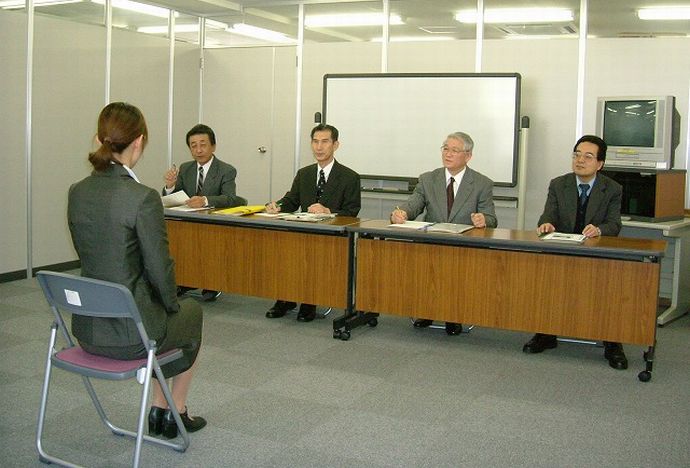Your signature does not work in Japan????
When you need to move to Japan, there are couple things you need to fulfil to settle such as a bank account, a drivers licence, a contracts for a school or work, and etc…
You are required to complete bunch of official documents and sign on them so many time.
However, for official documents, your signature is no longer acceptable here in Japan.
You are required to have your own seal stamp called Inkan/Hanko(印鑑/判子).
what is Inkan/Hanko?
Hanko/Inkan was brought from China in 4th century. After the introduction of seal, Japanese seal culture has began until today. One of the famous Inkan is “King of Na gold seal”.
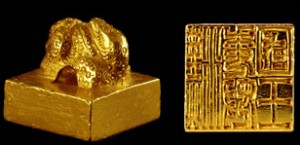
I am not going through details of Inkan/Hanko here, but this page explains Inkan/Hanko very well.
http://www.turning-japanese.info/2013/08/all-about-japanese-inkanhankochopsseals.html
Where to get Inkan/Hanko?
You may see signs says “印鑑/判子” in the cities and if you search on google, many sites come up.
However, there are varieties of seal materials (an elephant tusk is the most popular), Kanji fonts, stroke styles of Kanji, price ranges, and types of seal (such for bank account, company, your identification, etc…).
For Mitomein(the casual acceptance), you can get it at these stamp shop or online(http://www.moriinbo.com/catalog/kana_g.html) for few bucks, but these can not be used for formal documents to prevent the copy.
What’s the easiest way to make your own Japanese seal in Japan?
The answer is in Don Quijote. One of the largest retail discount store in Japan. (and Hawaii).

The world’s first vending machine for Inkan/Hank, called “SELF-HANKO BOX” is located at some Don Quijote stores.
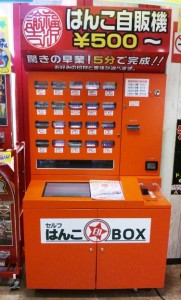
I will go through the usage of the vending machine. It is quite easy. You can make your own Japanese seal in 5 min.
1. Tap the “start button on the screen”
It says, choose a font or stroke style. There are 3 types of fonts.
- Tensho style (篆書体)
- Kisso style(吉相体)
- Koin style (古印体)
I recommend to use Kisso style which is very common for seals.


2. type in the character in Kanji, Kana, Roman alphabet.
choose the which Japanese character you want to use. Kana (カナ)、Kanji (漢字), Hiragana (ひらがな) or Roman alphabet.
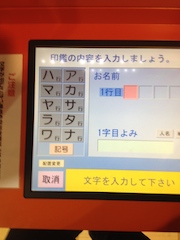
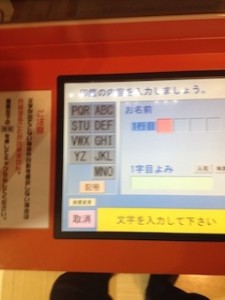
I chose roman alphabet for example.
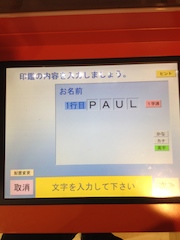

you can change the font style after this procedure.
3. adjust the size and margins.
This part is important!!!
This process prevent to get copied.



4. choose the materials.
After completing the fonts and characters, you need to choose which material you want to use for your own Japanese seal. There are varieties of materials available and it is different in stores.
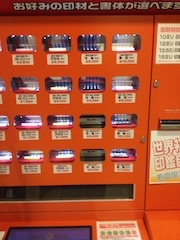

Main materials are
- plastic
- Akane (a type of wood)
- bullhorn
Of course, plastic ones are cheapest, and Akane, bullhorn, respectively. The price range is ¥1000 ~ 8000.
5. Insert the plane seal into the box on right.


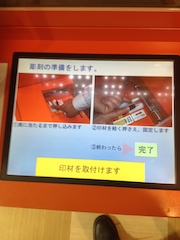
6. place the seal in and lock the seal.

7. wait for few min.
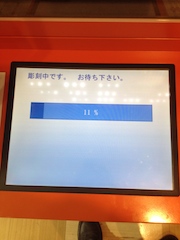
8. Done!!! You got your own Japanese seal and ready to start new life in Japan!!


Trivia: Females tend to use their first name instead of family name. This is because females in Japan tend to change their family name when get married.
I believe that this is not only the seal for you, but also it would be a great souvenir for Japan trip.
If you want to convert your name into Kanji, feel free to ask me.

